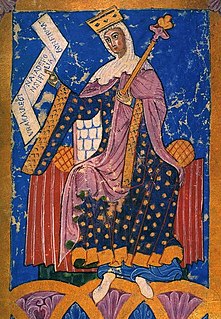
Urraca called the Reckless, was Queen of León, Castile, and Galicia from 1109 until her death in childbirth. She claimed the imperial title as suo jure Empress of All the Spains and Empress of All Galicia.

Sancho II, called the Strong, was King of Castile (1065–72), Galicia (1071–72) and León (1072).

Raymond of Burgundy was the ruler of Galicia from about 1090 until his death. He was the fourth son of Count William I of Burgundy and Stephanie. He married Urraca, future queen of León, and was the father of the future emperor Alfonso VII.
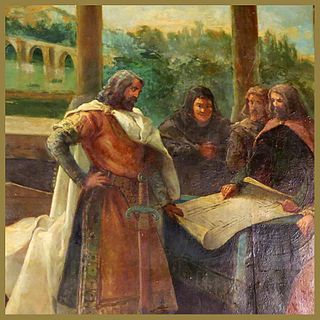
Pedro Ansúrez was a Castilian nobleman, count of Liébana, Saldaña and Carrión in the closing decades of the eleventh century and the opening decades of the twelfth. He is considered the founder and first lord of Valladolid.
The Battle of Llantada or Llantadilla was a border skirmish fought on 19 July 1068 on the banks of the Pisuerga near the frontier between León and Castile. There Sancho II of Castile defeated his brother Alfonso VI of León. Though Rodrigo Díaz de Vivar is usually associated with this battle, the evidence of his presence there is rather late and his influence in Castile at that early stage of his career too slight to make plausible the tradition that he was Sancho's alférez.

The Historia Roderici, originally Gesta Roderici Campi Docti and sometimes in Spanish Crónica latina del Cid, is an anonymous Latin prose history of the Castilian folk hero Rodrigo Díaz, better known as El Cid Campeador.
The Battle of Candespina was fought on 26 October 1111 between the forces of Alfonso I of Aragon and those of his estranged wife, Urraca of León and Castile, in the Campo de la Espina near Sepúlveda. Alfonso was victorious, as he would be again in a few weeks at the Battle of Viadangos.
The Battle of Viadangos or Fontedangos was fought in the autumn of 1111 between the forces of Alfonso I of Aragon and the Galician allies of his estranged wife, Urraca of León and Castile, at Villadangos north of Luna, some twenty kilometres from León. Alfonso was victorious in a rout, but Urraca's son and co-ruler, Alfonso Raimúndez, escaped.
The Chronicon Compostellanum is a narrative Latin chronicle of the history of Spain from the arrival of the Visigoths until the death of Queen Urraca of León on 8 March 1126. It was probably written shortly after this date, and probably in Galicia. It covers the history of the Visigothic kingdom and their successors, the Kingdom of Asturias, rapidly, incorporating the Laterculum regum ovetensium, a regnal list of the Asturian monarchy from Pelagius to Alfonso II written sometime after 791 and also incorporated in the Chronicon Iriense and the Annales Portugalenses veteres. For the eleventh-century Kingdom of León it is the earliest surviving source after the Historia silense (1109–18). The cause of Urraca's death—in labour with the child of her lover, Pedro González de Lara—is recorded in the Chronicon. Its first editor and publisher, Enrique Flórez, in his twenty-eighth preliminary note to the appendix of Latin documents in the twenty-third volume of his España Sagrada, described the text thus:

Pelagiusof Oviedo was a medieval ecclesiastic, historian, and forger who served the Diocese of Oviedo as an auxiliary bishop from 1098 and as bishop from 1102 until his deposition in 1130 and again from 1142 to 1143. He was an active and independent-minded prelate, who zealously defended the privileges and prestige of his diocese. During his episcopal tenure he oversaw the most productive scriptorium in Spain, which produced the vast Corpus Pelagianum, to which Pelagius contributed his own Chronicon regum Legionensium. His work as a historian is generally reliable, but for the forged, interpolated, and otherwise skillfully altered documents that emanated from his office he has been called el Fabulador and the "prince of falsifiers". It has been suggested that a monument be built in his honour in Oviedo.

Martin I was the fifteenth Bishop of Oviedo from 1094.
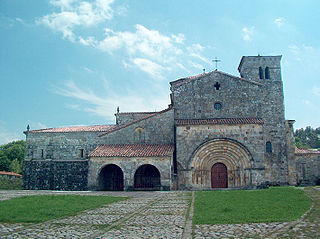
Fernando Díaz was a Spanish nobleman and military leader in the Kingdom of León, the most powerful Asturian magnate of the period. He held the highest rank in the kingdom, that of count, from at least 24 September 1089. He was the last Count of Asturias de Oviedo and was succeeded by a castellan, a novus homo, perhaps in an ecclesiastical–royal effort to curtail the power of the Asturian aristocracy.
FruelaDíaz, known in contemporary sources as Froila Didaci or Didaz, was a nobleman in the Kingdom of León, the dominant figure in the centre of the realm during the late reign of Alfonso VI and the early reign of Urraca. A man of great private wealth who expanded his landholdings through numerous purchases, he was able to marry royalty and maintain good terms with his sovereigns of León as well as the rulers of Galicia and Portugal, whose territories lay immediately to the west of his area of influence. He also founded a hospital, a traveller's inn and a settlement that grew into a town. His lands raised some of the most valuable horses in Spain, he was buried in the royal pantheon of the kings of León, and his high rank—highest in the kingdom after the king and the rulers of Galicia and Portugal—is remembered in the most famous of cantares de gesta.

Gómez González, called de Lara or de Candespina, was a Castilian nobleman and military leader who had some claim to being Count of Castile. He was the eldest son and successor of Gonzalo Salvadórez and his wife Sancha, and thus kinsman of the Lara family. Like his father, he perished in battle.

Pedro Fróilaz de Traba was the most powerful secular magnate in the Kingdom of Galicia during the first quarter of the twelfth century. According to the Historia compostelana, he was "spirited ... warlike ... of great power ... a man who feared God and hated iniquity," for Diego Gelmírez himself had "fed him, like a spiritual son, with the nutriment of holy teaching." Brought up at the court of the Emperor Alfonso VI, Pedro raised the future Emperor Alfonso VII in his household. Around the latter he and Diego formed a "Galician party" that dominated that region during the turbulent reign of Urraca (1109–26). In September 1111 they even had the child Alfonso crowned king at Santiago de Compostela, but it was Pedro who was imperator in orbe Galletiae.
Saint Gonzalo, a medieval Galician nobleman and clergyman, was the long-serving Bishop of Mondoñedo from 1071. According to one modern source he was a brother of Pedro Fróilaz de Traba. If he was elected at the canonical age of thirty, he would have been born in 1040 or 1041, which would in turn support the contemporary contention that he was old in 1104–5, but cast doubt on his relationship with Pedro Fróilaz. Perhaps he was a more distant relative of the same family, the budding House of Traba.
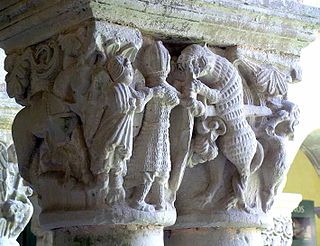
Rodrigo Muñoz, son of Count Munio González and Mayor Muñoz, was a Castilian magnate in the kingdoms of León and Castile. His tenancies were mostly in Cantabria, in the northern Castilian lands bordering the Basque country.
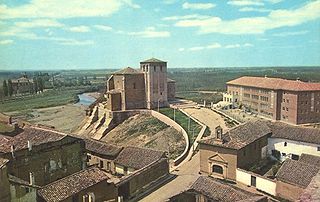
Beltránde Risnel, also called Bertrand de Laon, was a French-born Aragonese political and military leader during the reign of Alfonso the Battler, who was his cousin. Beltrán was mainly active in the kingdoms of León and Castile, which Alfonso co-ruled for a time with his wife, Queen Urraca. He received Leonese titles and governed territories in León and Castile on behalf of the crown. He only sporadically attended the court of either King Alfonso or Queen Urraca, but he sometimes acted as a go-between. He became progressively more involved to Leonese court politics, eventually serving Alfonso VII as a count and having a marriage arranged to the king's half-sister. In 1130, he joined his father-in-law in revolt and ended up much reduced in status. He eventually rejoined Alfonso the Battler and died in battle alongside him.
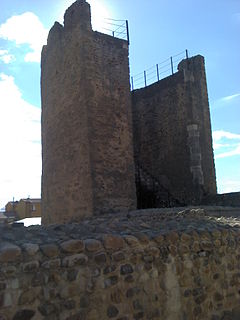
GutierreFernández was a Leonese nobleman who served as the majordomo (1110–17) of Queen Urraca until he was removed after imprisoning the queen's lover.
Peter I was the bishop of León from about 1087 until his deposition around 1111.















